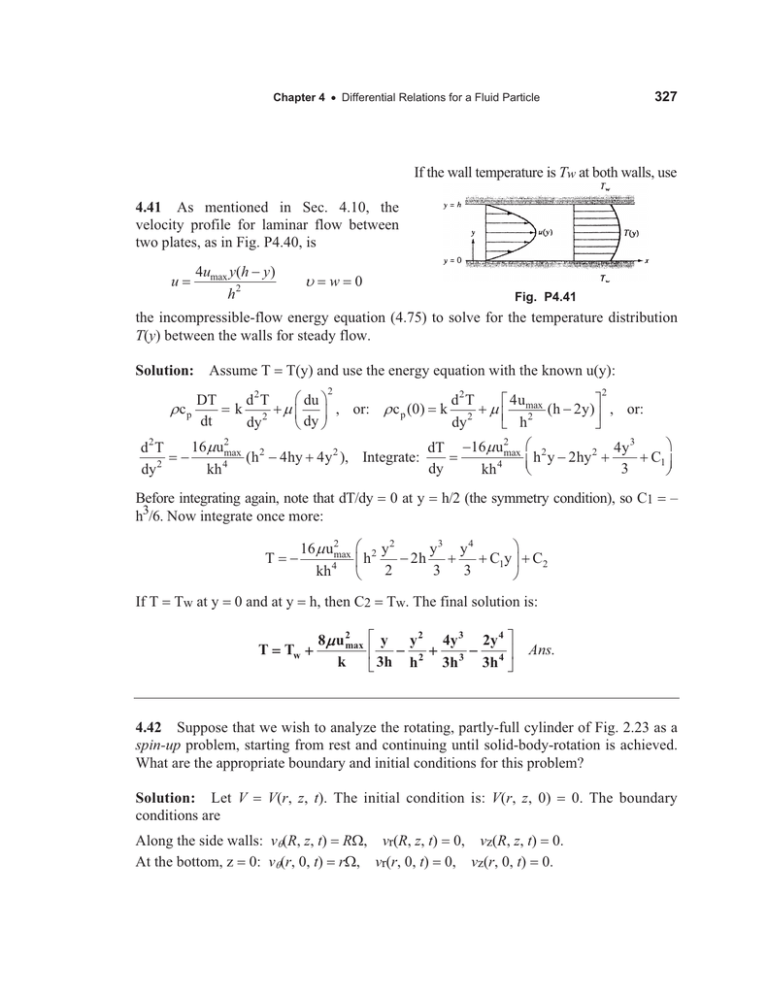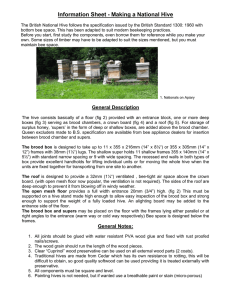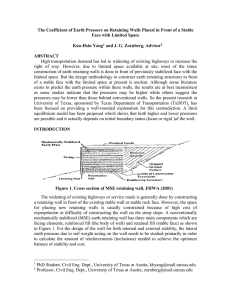Fluid Mechanics: Differential Relations & Solutions
advertisement

327 Chapter 4 x Differential Relations for a Fluid Particle If the wall temperature is Tw at both walls, use 4.41 As mentioned in Sec. 4.10, the velocity profile for laminar flow between two plates, as in Fig. P4.40, is u 4umax y(h y) h2 X w 0 Fig. P4.41 the incompressible-flow energy equation (4.75) to solve for the temperature distribution T(y) between the walls for steady flow. Solution: Assume T DT Ucp dt d2 T dy 2 T(y) and use the energy equation with the known u(y): 2 § du · d2 T k 2 P ¨ ¸ , or: U c p (0) dy © dy ¹ 16P u2max 2 dT (h 4hy 4y 2 ), Integrate: 4 dy kh Before integrating again, note that dT/dy h3/6. Now integrate once more: T If T 2 d2 T ª 4u º k 2 P « max (h 2y) » , or: 2 dy ¬ h ¼ Tw at y 0 and at y T 0 at y 16P u2max kh 4 § 2 · 4y 3 2 h y 2hy C 1 ¨© ¸¹ 3 h/2 (the symmetry condition), so C1 – · 16 P u2max § 2 y 2 y3 y 4 C1y ¸ C2 h 2h ¨ 4 2 3 3 kh © ¹ h, then C2 Tw 8P u 2max k Tw. The final solution is: ª y y 2 4y 3 2y 4 º « 2 3 4» 3h 3h ¼ ¬ 3h h Ans. 4.42 Suppose that we wish to analyze the rotating, partly-full cylinder of Fig. 2.23 as a spin-up problem, starting from rest and continuing until solid-body-rotation is achieved. What are the appropriate boundary and initial conditions for this problem? Solution: Let V conditions are V(r, z, t). The initial condition is: V(r, z, 0) Along the side walls: vT(R, z, t) R:, vr(R, z, t) 0, vz(R, z, t) 0. At the bottom, z 0: vT(r, 0, t) r:, vr(r, 0, t) 0, vz(r, 0, t) 0. 0. The boundary











